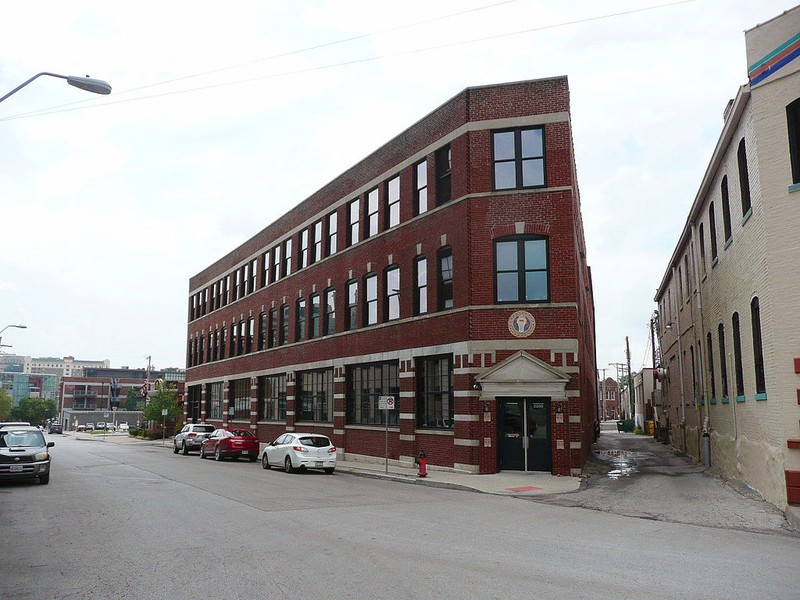Columbia Building
Introduction
Text-to-speech Audio
Constructed in 1920 for the Columbia Graphophone and Dictaphone Company, this three-story brick building served as a regional office with a warehouse on the first level, a second-story showroom, and offices on the third level. The company was one of the "Big Three" in the phonograph business, a trio that included Victor and the company founded by Thomas Edison. The company only remained in Kansas City for eight years, and at this location for six. The company's decision to close this branch office and showroom was a reflection of the company's shift towards a primary focus on recording music which led to its evolution to Columbia Records in the years that followed. The building was one of many similar structures built in the warehouse district north of Union Station following its completion in 1914. Similar to several neighboring buildings in Kansas City's Crossroads District that were constructed to fit within existing streets and alleys, the Columbia Building is roughly triangular in shape. Known as the Greenstreet and has been listed on the National Register of Historic Places and is now home to loft apartments.
Images
This Kansas City Building was originally home to Columbia Graphophone and Dictaphone Company, a forerunner to Columbia Records

Backstory and Context
Text-to-speech Audio
The building was designed by Kansas City's J. G. Braecklein, a prolific architect who had a role in shaping three thousand buildings during his long career. The building features a stone foundation and an ornate entrance with double glass and wooden doors capped with a Greek Revival cornice and pediment.
The Columbia Phonograph Company was established by Edward Easton on January 15, 1889. Easton was the general manager of the American Graphophone Company which produced the graphophone which was designed to reproduce recorded music. The company grew through a series of lawsuits and mergers, partly owing to Easton's recognition that dictaphones could meet the needs of courts as well as business executives.
In the 1920s, Union Station was the third largest rail station in the country, and many regional and national companies built warehouses, offices, and showrooms in this district. In the 1920s, the growing popularity of radio led to a temporary decline in phonograph sales, but eventually, the growth of radio led to increased demand for records. When Columbia decided to focus less on their office machine division centered on dictaphones, that reduced the need for this showroom. Although the Columbia company only occupied the building for six years and left Kansas City in 1928, this unique space offered a mixture of showroom and warehouse space along Southwest Boulevard and within the sprawling warehouse district that offered close access to passenger and freight transportation. The building was later known as the Greenstreet Warehouse Building and has held a variety of businesses. With the transformation of this neighborhood from warehouses to artist studios, offices, hotels, and restaurants, the building joined many other former warehouses and industrial spaces in being repurposed as apartments and condominiums.
Sources
Columbia Building, National Register of Historic Places Registration Form. March 30th, 2000. Accessed August 28th, 2022.
Columbia Corporate History: Introduction Reprinted from The Columbia Master Book Discography, Discography of American Historical Recordings, UC Santa Barbara Library. Accessed August 28th, 2022. https://adp.library.ucsb.edu/index.php/resources/detail/97.
https://en.wikipedia.org/wiki/National_Register_of_Historic_Places_listings_in_Jackson_County%2C_Missouri%3A_Downtown_Kansas_City#/media/File:Columbia_Building,_Kansas_City,_MO.jpg
